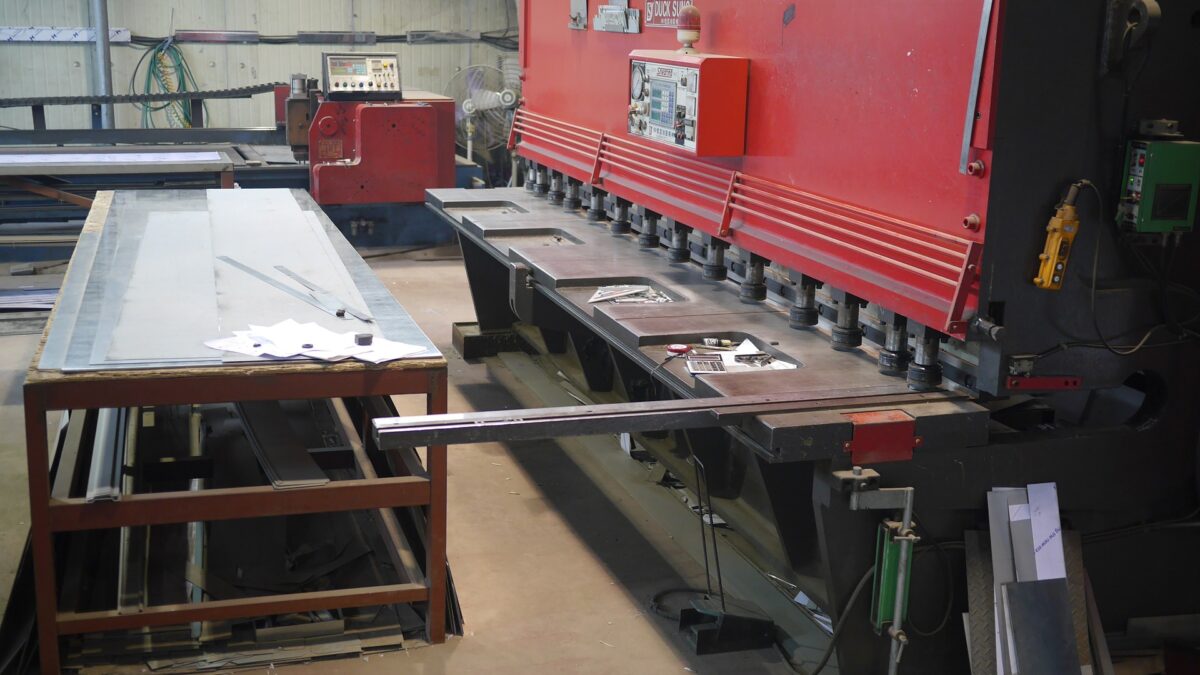Metal shearing is one of the fabricating processes that gets used by various industries. It allows the machinists to cut straight lines on the flat metal stock. The upper and lower blades get forced to meet during this process, resulting in a uniform cutting. The process doesn’t cause any problems during the fabrication. But it can cause defects to the workpiece that machine shop owners need to solve.
These defects can range from:
- Twist
- Bow
- Camber
- Blurred edges
- Deformed edges
This article will explain common shearing issues, what causes them, how to fix them and tips for keeping shear in top condition.
#1. Twist
In the metal shear process, it is one of the most common flaws. As a result of this flaw, the cut pieces tend to twist into scrolls or spins. Twisting is most common in thinly sliced areas and gets caused by over-rake angles.
Solution: To solve this problem, you must ensure that the rake angle is as tiny as possible. It is also a good idea to include an anti-twist device.
#2. Bow
Bowing is another common shearing issue during sheet metal fabrication. It happens when the material bows downwards during the process. It is prevalent when shearing thin and narrow strips of the materials. The cause is the stress caused by the material and not a problem with the shearing machine.
Solution: Just as with twists, the machine shop needs to reduce the rake angle to the minimum to avoid any signs of bowing during the metal shearing process.
#3. Camber
When a material that is sheared moves away from the sheet horizontally without twisting causes cambering. It is the amount of deflection present on the material. The issue is because of the stresses present in the material.
Solution: To prevent any possibility of cambering, the machine shop owners need to increase ram speed, change the direction of the material and adjust the rake angle of the metal shearing machine.
#4. Blurred edges
The blurred edges in the fabricated material get caused by inaptly gapped shear blades on the metal shearing machine. During the metal shearing process, the distance between two blades should be following the thickness and type of the metal getting fabricated. Too much and too little gap both are not ideal during the metal fabrication process. With too much gap, it can tear the edges of the metal, and if the gap is small, the metal blades won’t make it via the material without stopping.
Solution: The solution is easy for blurred edges. The machine shop owners need to consult the operating manual of the shear material machine. It helps to know the proper clearance of the machine, thickness and material type.
#5. Deformed edges
Deformed edges get caused because of the incorrect blade shear gap, damaged or dull blades. Another reason; for deformed edges is the unsuitable hold-downs.
Solution: There must be a proper gap between the blades associated with type and thickness. After this, ensure that the blades are sharp and have no damage. Check the hold-down to ensure they are holding the material in the same place during the shearing process. It shouldn’t allow the material to slip. At last, check shear’s gibs as it can lead the upper material to jump back.
Tips to keep your shear in mint condition
Shearing tools with no repairs bring trouble for workers and improper design of the material. Here are some tips helping the machine shop owners keeping the shear in top condition:
# Tip 1. Perform regular inspections
There must be an organized inspection process that the machine shop owners adhere. The areas to be inspected include the shear’s potential to execute all functional operations on all the mechanical machines. The bearings must get checked for wear and tear and as well as safety functions.
# Tip 2. Setting the blade
Setting the shear blade is ideal for increasing the blade and machine life. The proper clearances for the blade cutting affect the tooling, ram, cut quality and drive. Before setting the blade, it should be checked for flatness and ensure that the tooling is seated to abolish blade chipping caused by shifting during the cutting process. If the clearances are too tight, it leads to improper cutting action. If there is no clearance, the blades will break.
# Tip 3. Repair as soon as possible
When there is damage, out of adjustments are found, the shear needs to get fixed quickly. A failure is due to neglecting repairs. Addressing the repairs is less expensive in the long run than correcting the damage. Regular inspections ensure the safety of the operator.
# Tip 4. Maintain the gib clearance
Setting and maintaining the gib clearances can increase the tool life and machine uptime. The gib conserves the guiding action of the attached tooling and the ram. If the gib clearances aren’t maintained, the same problems occur when the blades get ignored.
# Tip 5. Review documentation
After the regular inspections are documented and performed. The data must get reviewed systematically and helps with wear patterns, the potential for accidents. So, ideal repairs get made in time. Documentation and analysis help with preventive maintenance. With all this information, a maintenance plan gets prepared while eliminating emergency repairs.


